Vinipel Curing: A Sustainable Approach to Enhanced Concrete Durability and Strength
Abstract
1. Introduction
2. Materials and Methods
2.1. Cement, Aggregate, and Water
2.2. Cylinder Manufacturing and Curing Techniques
2.3. Microstructural Characterization
3. Results and Discussion
3.1. Analysis of Compressive Strength vs. Curing Techniques
3.2. Analysis of Hydration Products Under the Different Curing Techniques
3.3. Elemental Mapping (Chemical Composition Analysis)
3.4. Porosity Analysis
4. Conclusions
Author Contributions
Funding
Data Availability Statement
Conflicts of Interest
References
- Russo, A.; Cirella, G.T. Urban sustainability: Integrating ecology in city design and planning. In Sustainable Human–Nature Relations: Environmental Scholarship, Economic Evaluation, Urban Strategies; Springer: Singapore, 2020; pp. 187–204. [Google Scholar]
- Rubio, N.V.T.; Sarmiento-Rojas, J.A.; Junco, O.J.G. Efecto del tipo de activador en un mortero de escoria mezclado con caliza activada alcalinamente. Inge Cuc 2019, 15, 1–10. [Google Scholar] [CrossRef]
- Cavalieri, F.; Bellotti, D.; Caruso, M.; Nascimbene, R. Comparative evaluation of seismic performance and environmental impact of traditional and dissipation-based retrofitting solutions for precast structures. J. Build. Eng. 2023, 79, 107918. [Google Scholar] [CrossRef]
- Du, M.; Liao, L.; Wang, B.; Chen, Z. Evaluating the effectiveness of the water-saving society construction in China: A quasi-natural experiment. J. Environ. Manag. 2021, 277, 111394. [Google Scholar] [CrossRef]
- ACI 308R; Guide to Curing Concrete. American Concrete Institute: Farmington Hills, MI, USA, 2001.
- Surahyo, A.; Surahyo, L.; Luby. Concrete Construction; Springer: Berlin/Heidelberg, Germany, 2019. [Google Scholar]
- Pawar, Y.; Kate, S. Curing of Concrete: A Review. Int. Res. J. Eng. Technol. 2020, 7, 1820–1824. [Google Scholar]
- Rojas, M.F.; Cabrera, J. The effect of temperature on the hydration rate and stability of the hydration phases of metakaolin–lime–water systems. Cem. Concr. Res. 2002, 32, 133–138. [Google Scholar] [CrossRef]
- Cremonez, C.; da Fonseca, J.M.M.; Cury, A.C.S.; Ferreira, E.O.; Mazer, W. Analysis of the influence of the type of curing on the axial compressive strength of concrete. Mater. Today Proc. 2022, 58, 1211–1214. [Google Scholar] [CrossRef]
- Zeyad, A.M. Effect of curing methods in hot weather on the properties of high-strength concretes. J. King Saud Univ. Eng. Sci. 2019, 31, 218–223. [Google Scholar] [CrossRef]
- Golfetto, J.M.; Padilha, F.; Schimelfenig, B.; da Silva, C.V. Estudo experimental da influência da adição de microfibras de polipropileno e da cura na dureza superficial de pisos de concreto. Matéria 2019, 24, e12432. [Google Scholar] [CrossRef]
- Pérez, I.S.; Velayos, J.J.A.; Hernández, M.G.; Macphee, D.E.; Moragues, A.; Martin, T.S. Microstructural characterization of aged mortar by destructive and non-destructive testing. In Proceedings of the 12th International Congress on the Chemistry of Cement, Montreal, QC, Canada, 8–13 July 2008. [Google Scholar]
- Murillo, M.; Abudinen, D.; del Río, M.; Serrato, N.; Patrón, L.; Ramírez, J. Comparative analysis of the compressive strength of concrete under different curing methods. IOP Conf. Ser. Mater. Sci. Eng. 2021, 1126, 12002. [Google Scholar] [CrossRef]
- Wang, J.; Long, G.; Xiang, Y.; Dong, R.; Tang, Z.; Xiao, Q.; Yang, Z.; Ma, K. Influence of rapid curing methods on concrete microstructure and properties: A review. Case Stud. Constr. Mater. 2022, 17, e01600. [Google Scholar] [CrossRef]
- Hover, K.C. The influence of water on the performance of concrete. Constr. Build. Mater. 2011, 25, 3003–3013. [Google Scholar] [CrossRef]
- Mohe, N.S.; Shewalul, Y.W.; Agon, E.C. Experimental investigation on mechanical properties of concrete using different sources of water for mixing and curing concrete. Case Stud. Constr. Mater. 2022, 16, e00959. [Google Scholar] [CrossRef]
- Ekasila, S.; Vishali, B.; Anisuddin, S. An experimental investigation on compressive strength of concrete with rice husk and cow dunk ash using various curing methods. Mater. Today Proc. 2022, 52, 1182–1188. [Google Scholar] [CrossRef]
- Alvarado, J. Variación de la Resistencia a Compresión del Concreto 210, 245, 280 kg/cm2 Frente a Diferentes Métodos de Curado. Bachelor’s Thesis, Universidad Cesar Vallejo, Lima, Peru, 2020; p. 47. [Google Scholar]
- Delgado, A.L.F.; Silva, L.A.P. Resistencia a la Compresión de Concreto de 21MPA, Utilizando Cobertura Tipo Fibra de Costal y Cobertura Tela Polar FLEECE en el Curado del Concreto. Bachelor’s Thesis, Universidad Santo Tomas, Bogota, Colombia, 2015. [Google Scholar]
- Osei, D.Y.; Mustapha, Z.; Zebilila, M.D.H. Compressive strength of concrete using different curing methods. J. Soc. Dev. Sci. 2019, 10, 30–38. [Google Scholar]
- Ramana, P.V.; Surendranath, A. Assessment of endurance and microstructural properties effect on polypropylene concrete. Mater. Today Proc. 2022, 52, 2184–2191. [Google Scholar] [CrossRef]
- Jain, A.; Chaudhary, S.; Gupta, R. Mechanical and microstructural characterization of fly ash blended self-compacting concrete containing granite waste. Constr. Build. Mater. 2022, 314, 125480. [Google Scholar] [CrossRef]
- Nahata, Y.; Kholia, N.; Tank, T.G. Effect of Curing Methods on Efficiency of Curing of Cement Mortar. APCBEE Procedia 2014, 9, 222–229. [Google Scholar] [CrossRef]
- Gowsika, D.; Balamurugan, P.; Kamalambigai, R. Experimental study on curing methods of concrete. Int. J. Eng. Dev. Res. 2017, 5, 257–260. [Google Scholar]
- James, T.; Malachi, A.; Gadzama, E.W.; Anametemok, A. Effect of curing methods on the compressive strength of concrete. Niger. J. Technol. 2011, 30, 14–20. [Google Scholar]
- Hamada, H.; Alattar, A.; Tayeh, B.; Yahaya, F.; Almeshal, I. Influence of different curing methods on the compressive strength of ultra-high-performance concrete: A comprehensive review. Case Stud. Constr. Mater. 2022, 17, e01390. [Google Scholar] [CrossRef]
- ASTM C778-17; Standard Specification for Standard Sand. ASTM International: West Conshohocken, PA, USA, 2017. [CrossRef]
- Murillo, M.; Abudinen, D.; Torres, D.; Vásquez, M.; Cano, H.; Canales, F.; De la Iglesia, J.; Barraza, B. Experimental and comparative study of the compressive strength of hydraulic concrete samples subjected to various curing techniques. J. Posit. Sch. Psychol. 2022, 6, 8258–8271. [Google Scholar]
- ASTM C39/C39M-21; ASTM International Committee C09 on Concrete and Concrete Aggregates. Standard Test Method for Compressive Strength of Cylindrical Concrete Specimens. ASTM International: West Conshohocken, PA, USA, 2014.
- Goel, A.; Narwal, J.; Verma, V.; Sharma, D.; Singh, B. A Comparative Study on the Effect of Curing on the Strength of Concrete. Int. J. Eng. Adv. Technol. 2013, 2, 401–406. [Google Scholar]
- Kosmatka, S.H.; Wilson, M.L. Design and Control of Concrete Mixtures: The Guide to Applications, Methods, and Materials, 15th ed.; Portland Cement Association: Skokie, IL, USA, 2011. [Google Scholar]
- DeBruijn, G.; Whitton, S.M. Fluids. In Applied Well Cementing Engineering; Elsevier: Amsterdam, The Netherlands, 2021; pp. 163–251. [Google Scholar]
- Giraldo, M.A.; Tobón, J.I. Evolución mineralógica del cemento portland durante el proceso de hidratación. Dyna 2006, 73, 69–81. [Google Scholar]
- Davila, F.J.; John, V.M. Formación de etringita tardía en elementos de construcción. Rev. Colomb. Mater. 2014, 5, 231–237. [Google Scholar] [CrossRef]
- Jakobsen, U.H.; De Weerdt, K.; Geiker, M.R. Elemental zonation in marine concrete. Cem. Concr. Res. 2016, 85, 12–27. [Google Scholar] [CrossRef]
- Abhilash, P.P.; Nayak, D.K.; Sangoju, B.; Kumar, R.; Kumar, V. Effect of nano-silica in concrete; a review. Constr. Build. Mater. 2021, 278, 122347. [Google Scholar] [CrossRef]
- Durand Ciudad, A.J. Influencia del Óxido de Calcio en la Trabajabilidad, Fraguado, Compresión, Densidad, Porosidad y Absorción del Concreto para Elementos Estructurales, Trujillo 2017. Bachelor’s Thesis, Universidad Privada del Norte, Trujillo, Peru, 2017. [Google Scholar]
- Xu, D.; Tang, J.; Hu, X.; Yu, C.; Han, F.; Sun, S.; Deng, W.; Liu, J. The influence of curing regimes on hydration, microstructure and compressive strength of ultra-high performance concrete: A review. J. Build. Eng. 2023, 76, 107401. [Google Scholar] [CrossRef]
- Nery, G. O que é Monitoração na Construção Civil? Boletín Técnico no 5; Asociación Latinoamericana de Control de Calidad, Patología e Recuperación de la Construcción—ALCONPAT Int: São Paulo, Brasil, 2013. [Google Scholar]
- Solis-Carcaño, R.; Moreno, E.I. Análisis de la porosidad del concreto con agregado calizo. Rev. la Fac. Ing. la UCV 2006, 21, 57–68. [Google Scholar]
- Chen, J.; Li, Y.; Wen, L.; Guo, H.; Li, K. Effect of different curing processes on hydraulic concrete performance. ACI Mater. J. 2022, 119, 27–37. [Google Scholar]
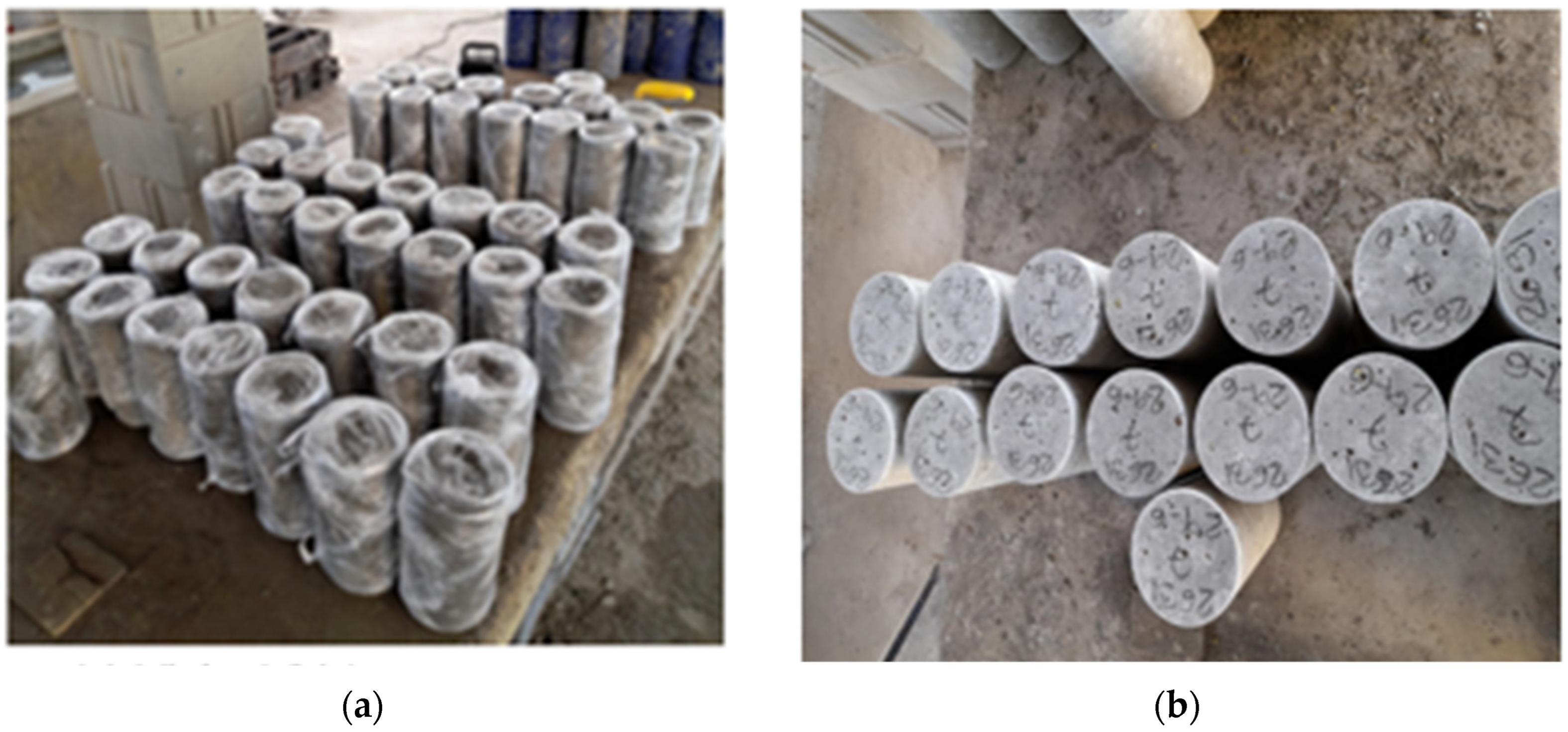

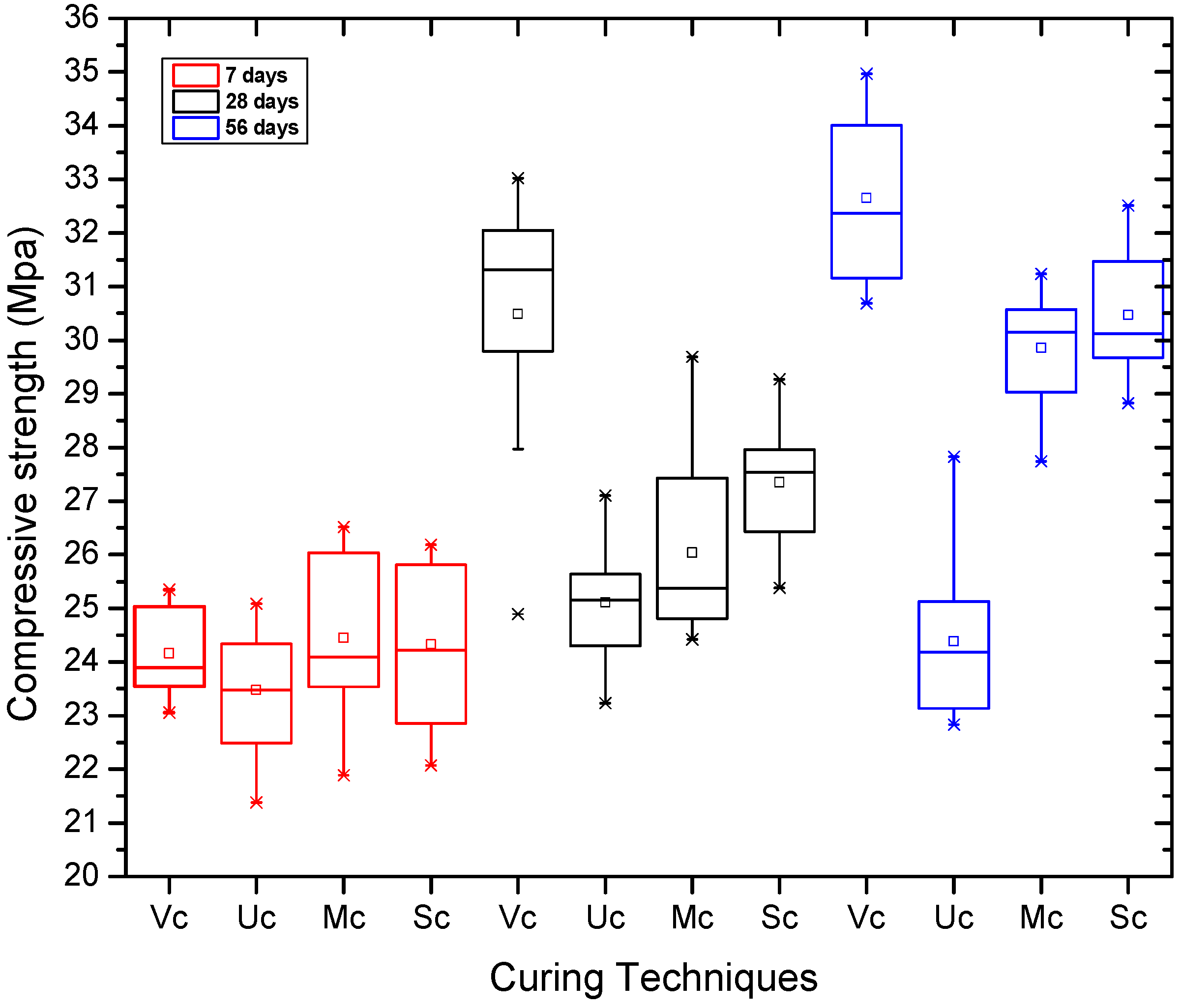
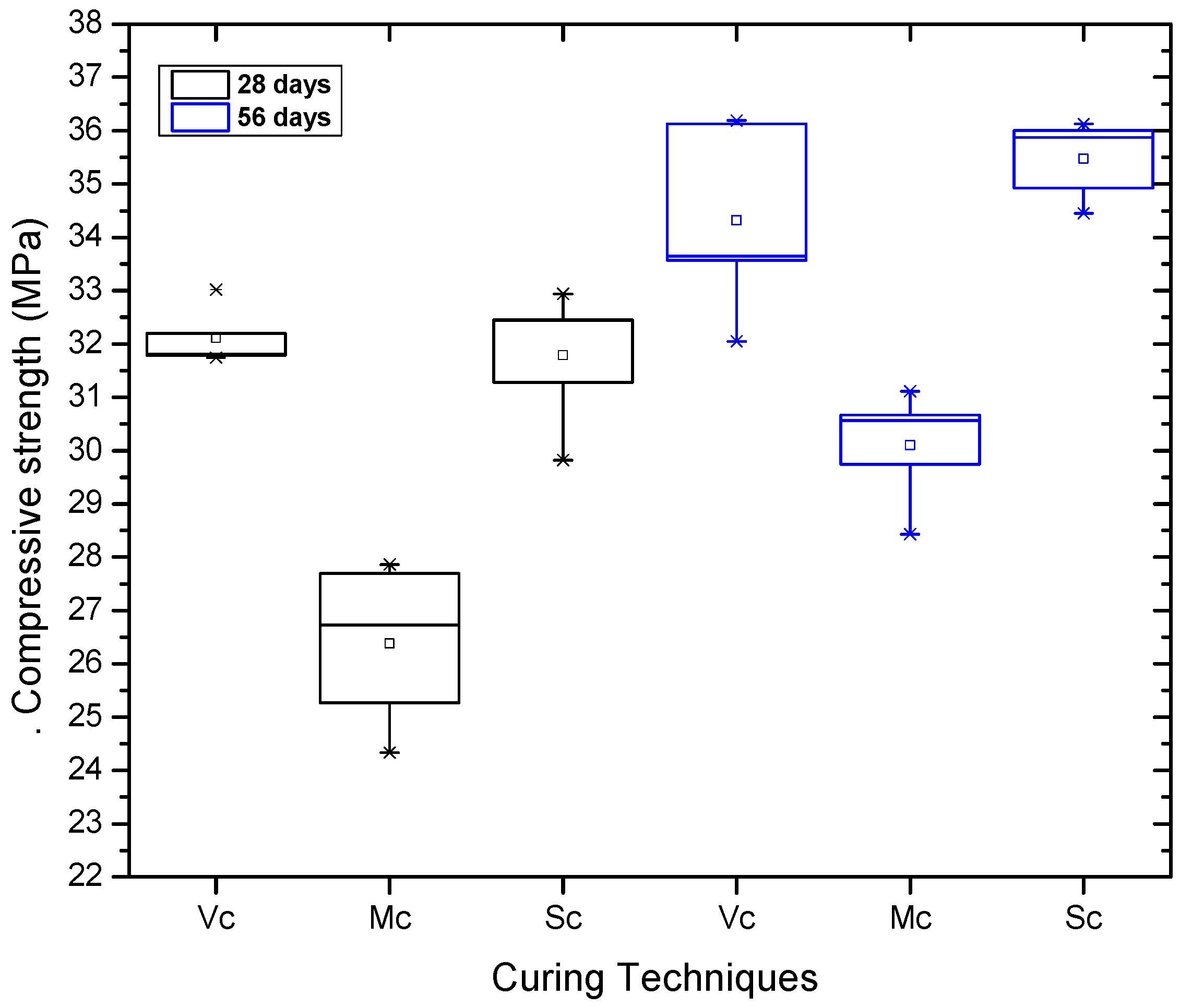
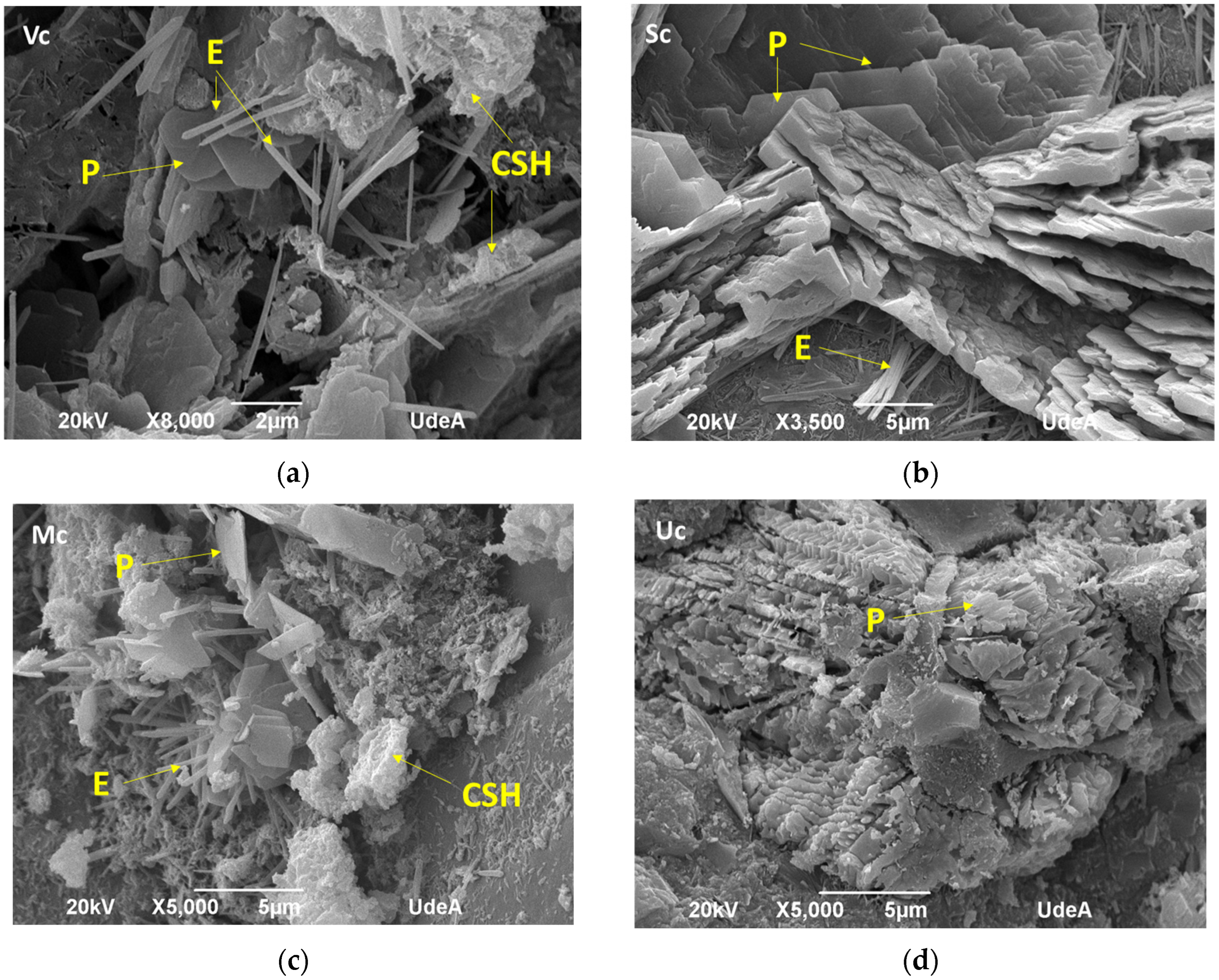

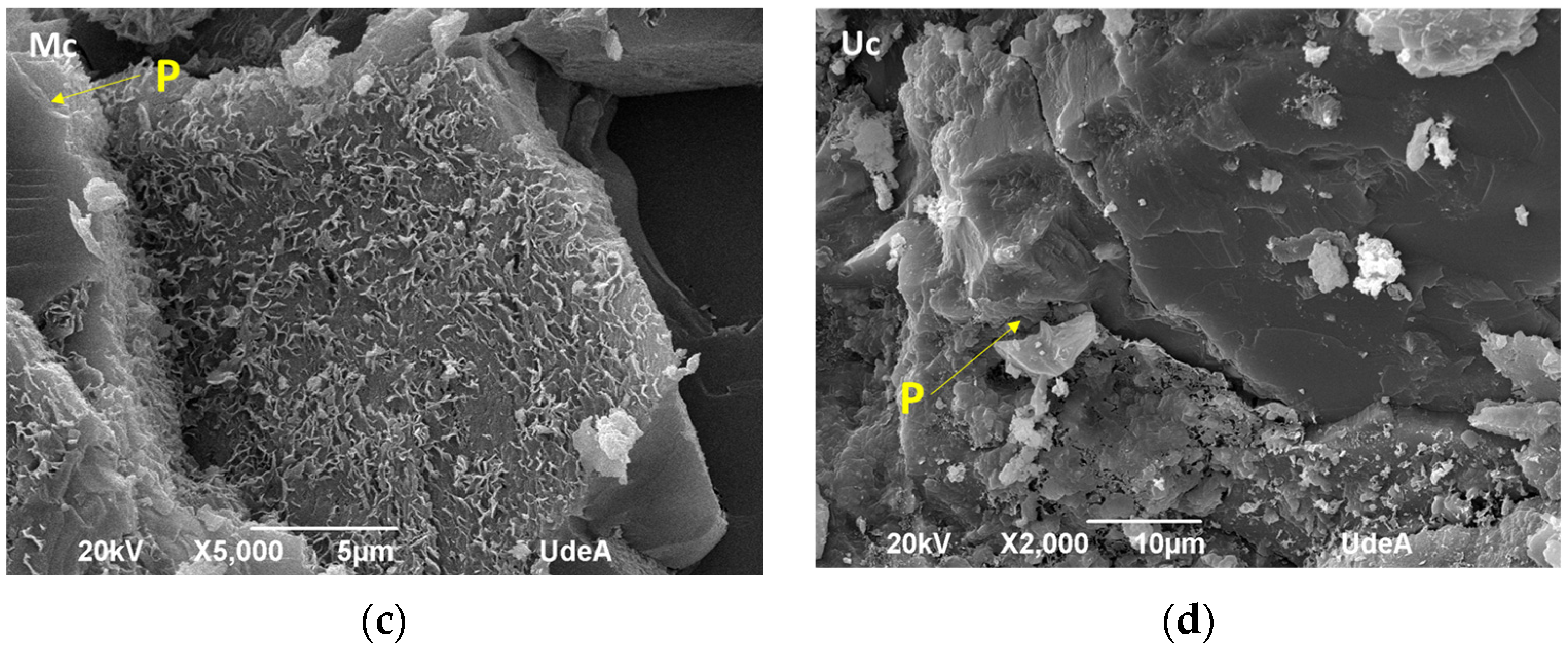
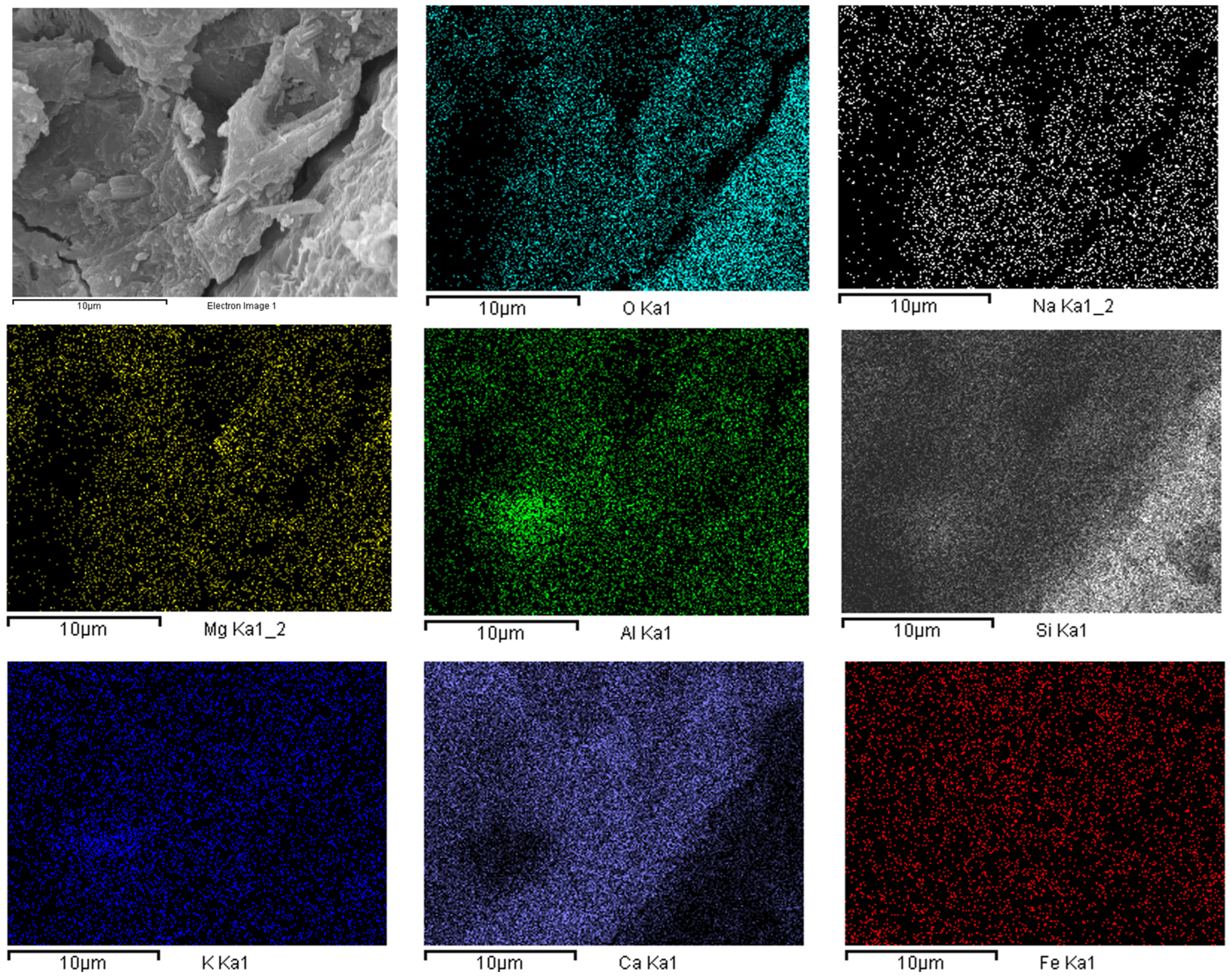

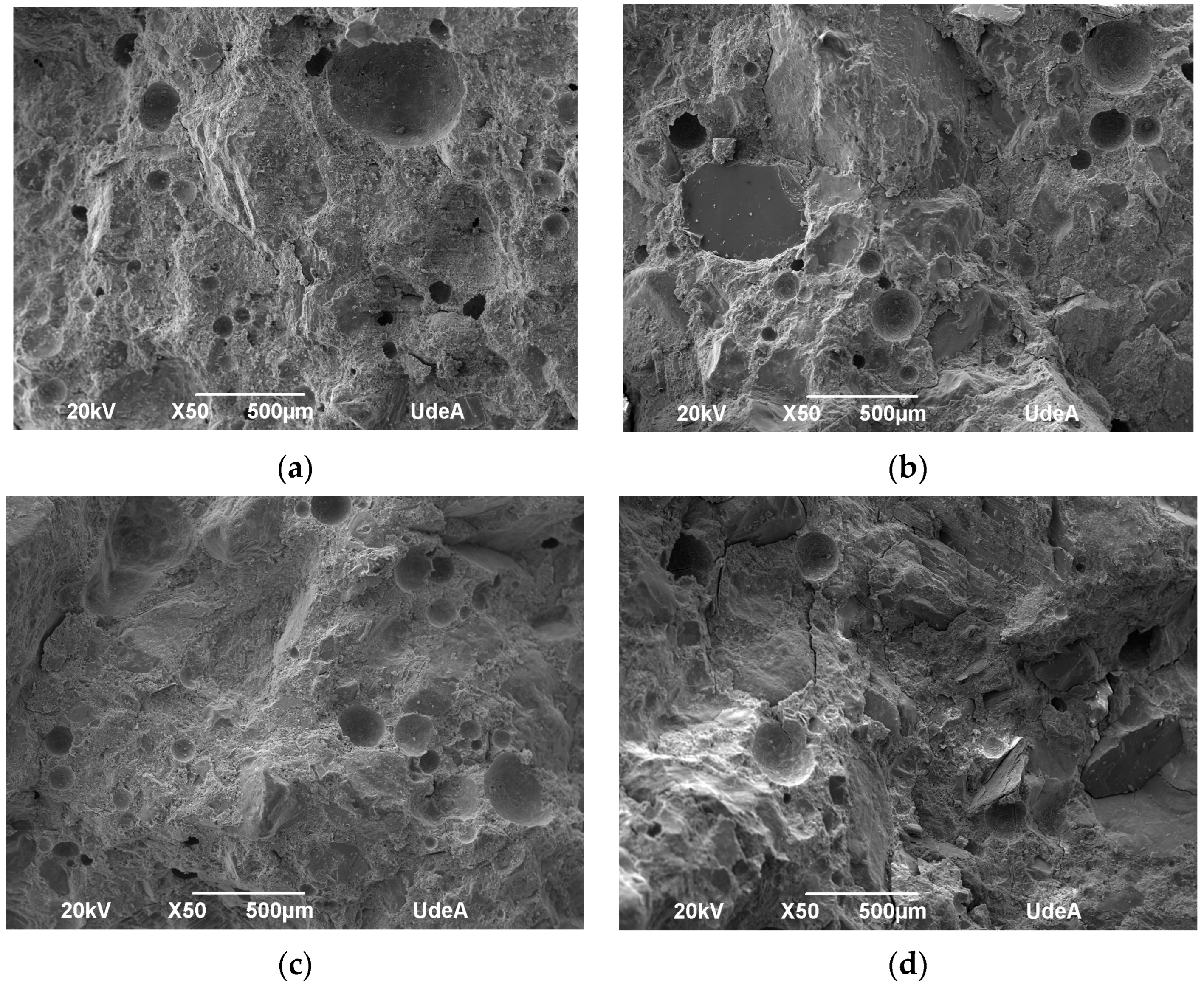
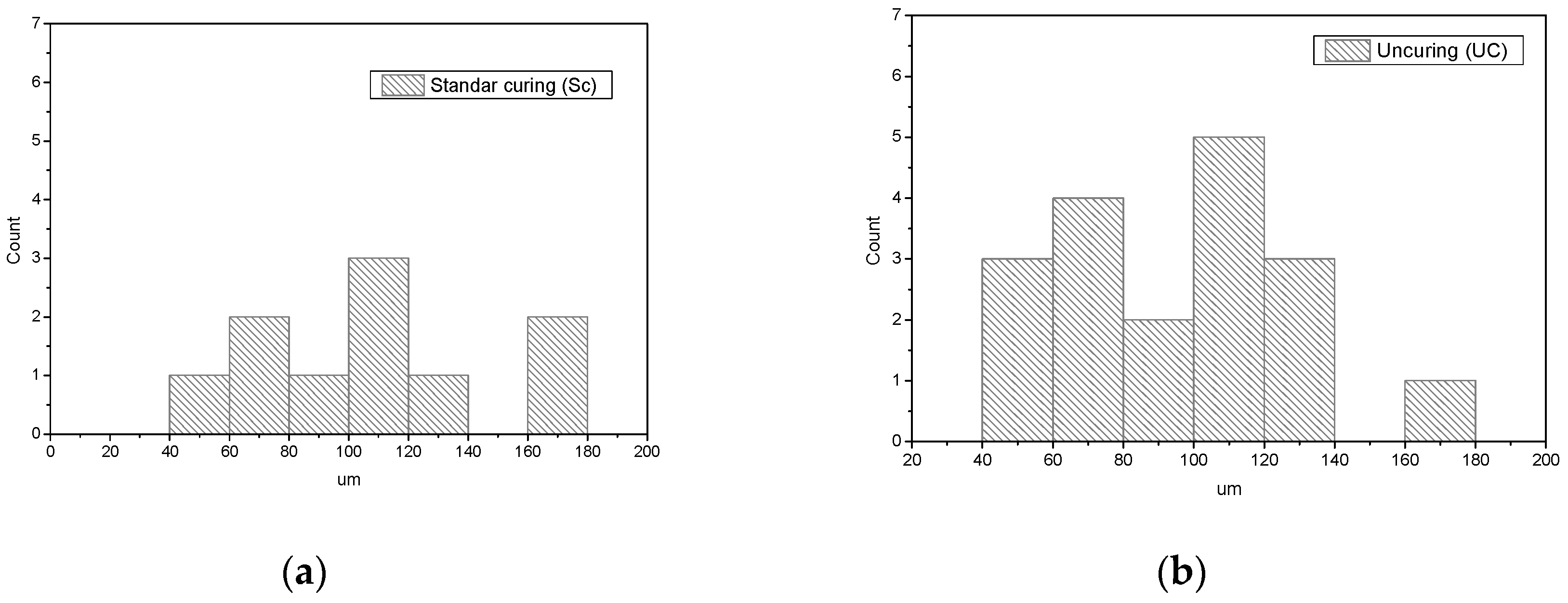
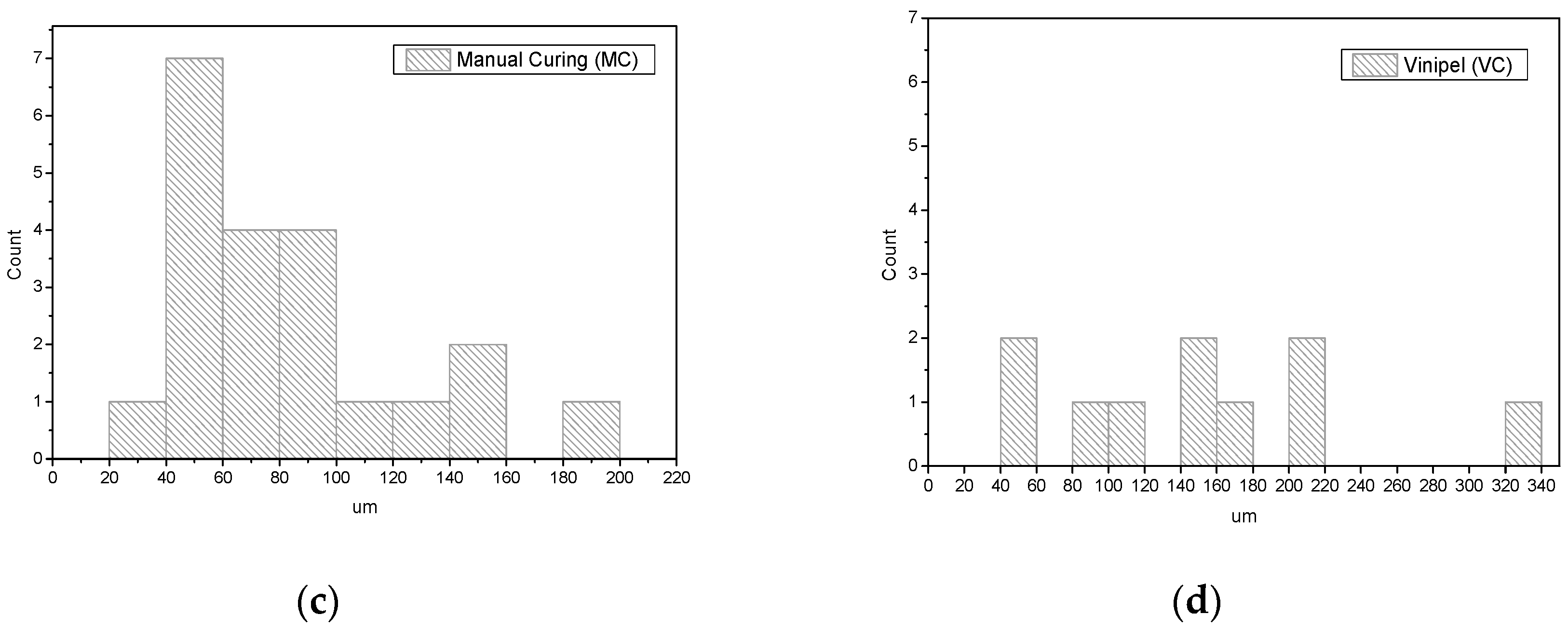
| Materials | Dry Mass/m3 [kg] | Density [kg/L]) | Volume [L/m3]) | Dry Mass [kg] | Humidity | Absorption | Corrected Water | Corrected Mass [kg] |
|---|---|---|---|---|---|---|---|---|
| Cement | 299 | 3.100 | 96 | 28.1 | 28.1 | |||
| Water | 165 | 1 | 165 | 15.5 | 9.84 | |||
| Coarse aggregate | 951 | 2.53 | 375 | 89.5 | 1.60% | 1.4% | −0.18 | 90.89 |
| Fine aggregate | 914 | 2.54 | 361 | 86 | 7.40% | 1% | −239.14 | 92.31 |
| Air | 1% | 10 | 0 | |||||
| Eucon wr 85 | 1.43 | 1.17 | 1.23 | 0.13 | 0.135 | |||
| Plastol 7200 | 1.79 | 1.08 | 2 | 0.17 | 0.17 | |||
| A/C design | 0.552 |
| Technique | Characteristic | Ages of Curing (Days) | Number of Samples by Age |
|---|---|---|---|
| Manual Curing (Mc) | The human factor influences when performing the curing procedure during the established days. | 7 | 15 |
| 28 | 15 | ||
| 56 | 15 | ||
| Uncured (Uc) | No curing procedure is applied to him, exposing him to interperie | 7 | 15 |
| 28 | 15 | ||
| 56 | 15 | ||
| Vinipel (Vc) | A wrap is applied to it after spraying water on the entire sample. | 7 | 15 |
| 28 | 15 | ||
| 56 | 15 | ||
| Standard curing (Sc) | This standardized procedure is performed by governing the standards established in the ASTM | 7 | 15 |
| 28 | 15 | ||
| 56 | 15 |
Disclaimer/Publisher’s Note: The statements, opinions and data contained in all publications are solely those of the individual author(s) and contributor(s) and not of MDPI and/or the editor(s). MDPI and/or the editor(s) disclaim responsibility for any injury to people or property resulting from any ideas, methods, instructions or products referred to in the content. |
© 2025 by the authors. Licensee MDPI, Basel, Switzerland. This article is an open access article distributed under the terms and conditions of the Creative Commons Attribution (CC BY) license (https://creativecommons.org/licenses/by/4.0/).
Share and Cite
Bolaño, J.; De la Iglesia, J.; Murillo, M.; Abudinen, D.; Canales, F.A.; Cano, H. Vinipel Curing: A Sustainable Approach to Enhanced Concrete Durability and Strength. CivilEng 2025, 6, 9. https://doi.org/10.3390/civileng6010009
Bolaño J, De la Iglesia J, Murillo M, Abudinen D, Canales FA, Cano H. Vinipel Curing: A Sustainable Approach to Enhanced Concrete Durability and Strength. CivilEng. 2025; 6(1):9. https://doi.org/10.3390/civileng6010009
Chicago/Turabian StyleBolaño, Joeel, Joyce De la Iglesia, Michel Murillo, Daniel Abudinen, Fausto A. Canales, and Heidis Cano. 2025. "Vinipel Curing: A Sustainable Approach to Enhanced Concrete Durability and Strength" CivilEng 6, no. 1: 9. https://doi.org/10.3390/civileng6010009
APA StyleBolaño, J., De la Iglesia, J., Murillo, M., Abudinen, D., Canales, F. A., & Cano, H. (2025). Vinipel Curing: A Sustainable Approach to Enhanced Concrete Durability and Strength. CivilEng, 6(1), 9. https://doi.org/10.3390/civileng6010009









